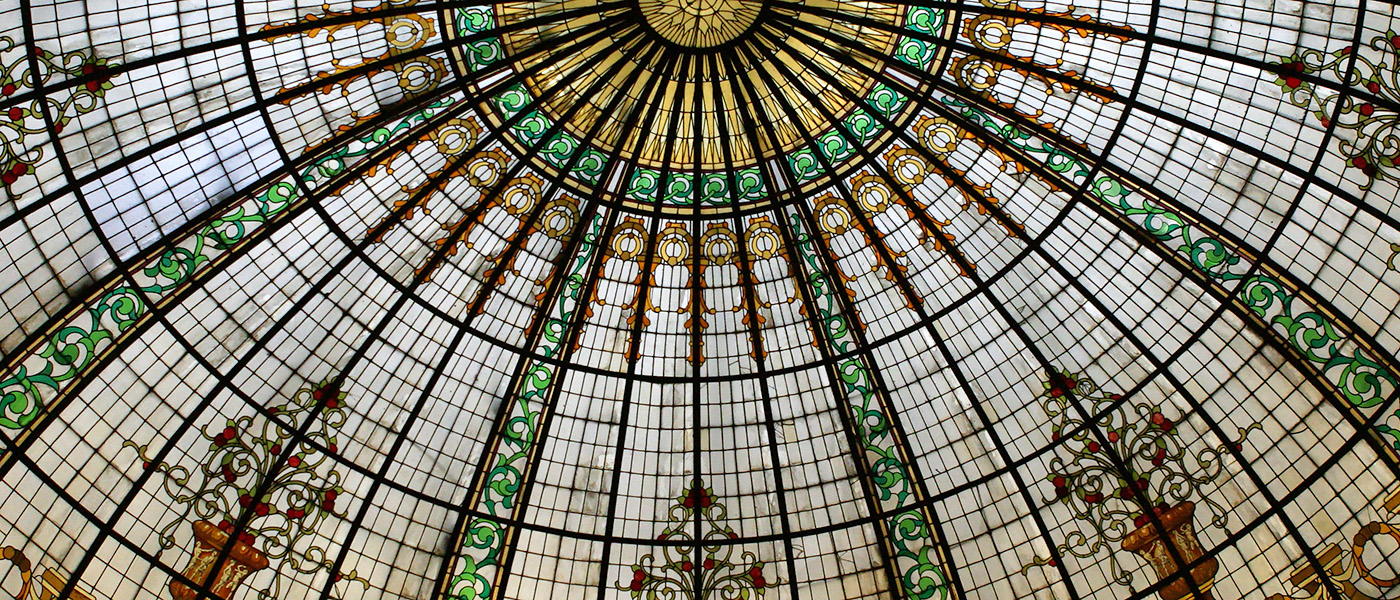

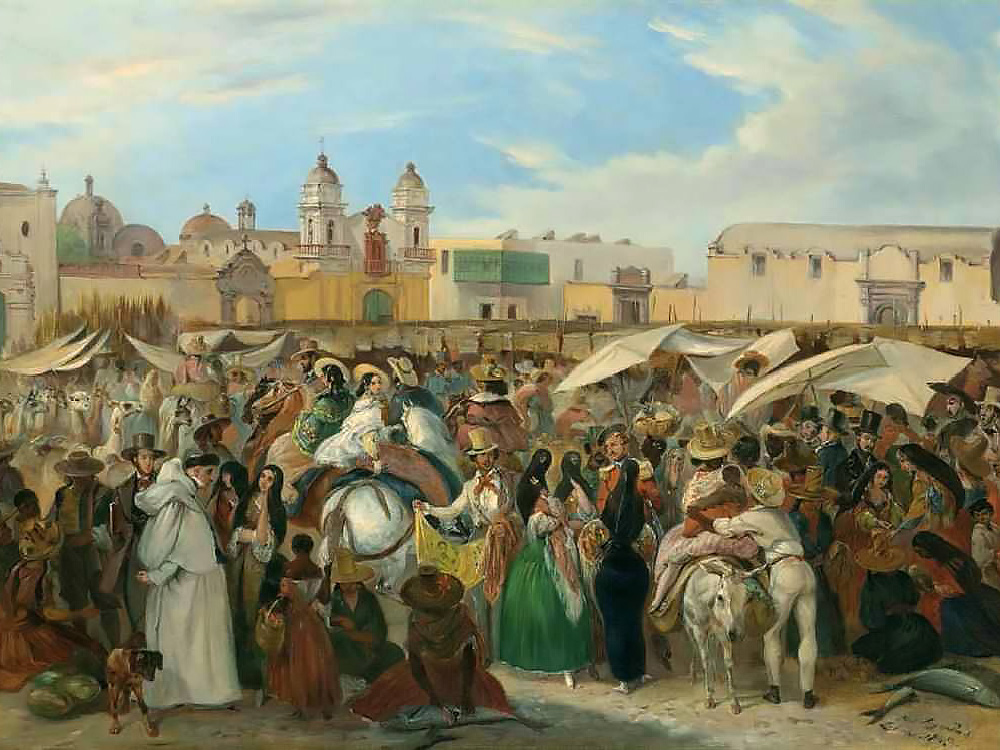
The city has lost none of its vibrancy or movement, and many of the building in Lima's historic center continue to reflect the same architectural styles that they did when Johann Mortiz Rugendas painted this market scene in 1843.
"Market in the Plaza of the Inquisition"
The People
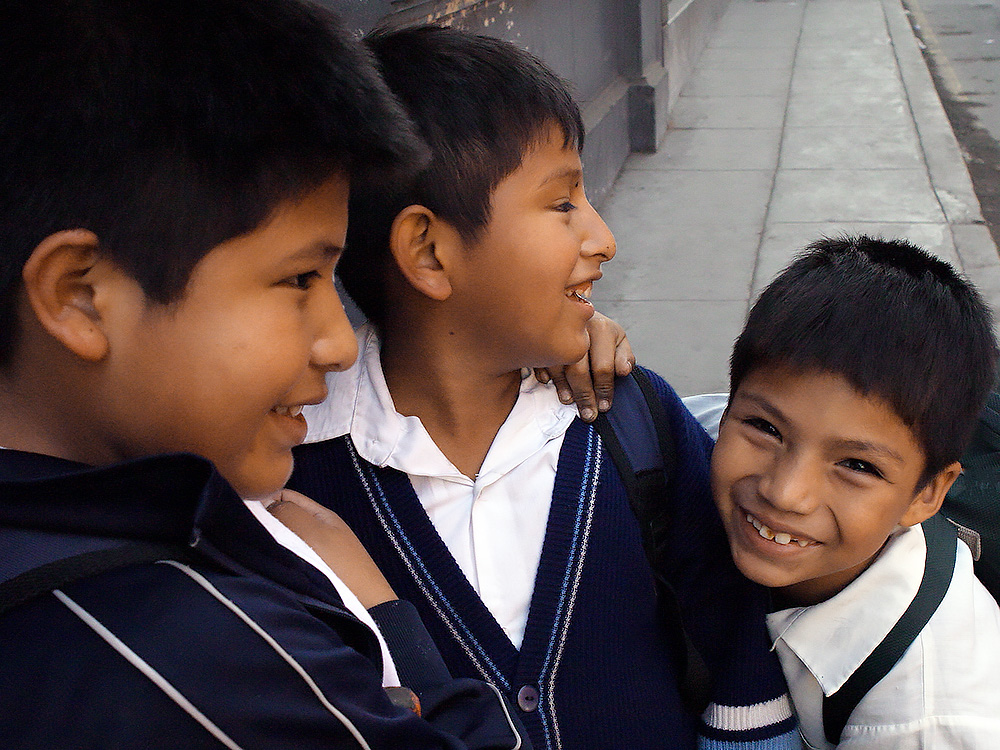
These young boys are heading to school,
but they take time to welcome a stranger to Lima
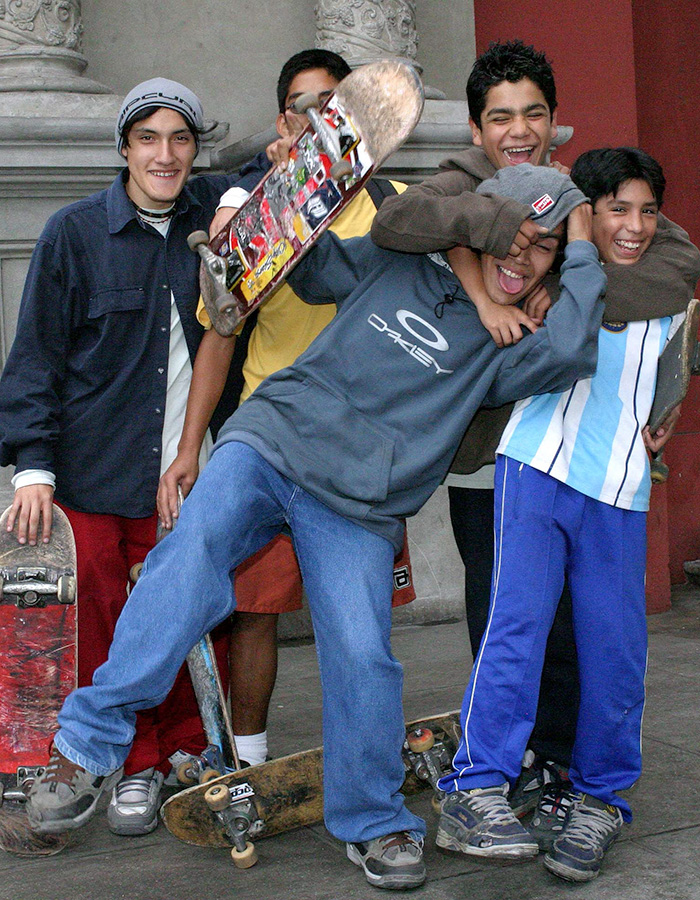
"Think where man's glory most begins and ends,
and say my glory was I had such friends."
William Butler Yeats

This woman is well dressed and her hat is knitted, but in the style of the bowler hats worn by indigenous women. She has had a long life, or a hard one.
Scenes of City Life

After lunch this gentleman relaxes with the day's newspaper. The front page headline reads: "General Repudiation of Sales Tax Increase", a headline that might sound familiar to people anywhere in the world. The photo was taken in the Cordano, the oldest bar-restaurant in Peru, founded in 1905.
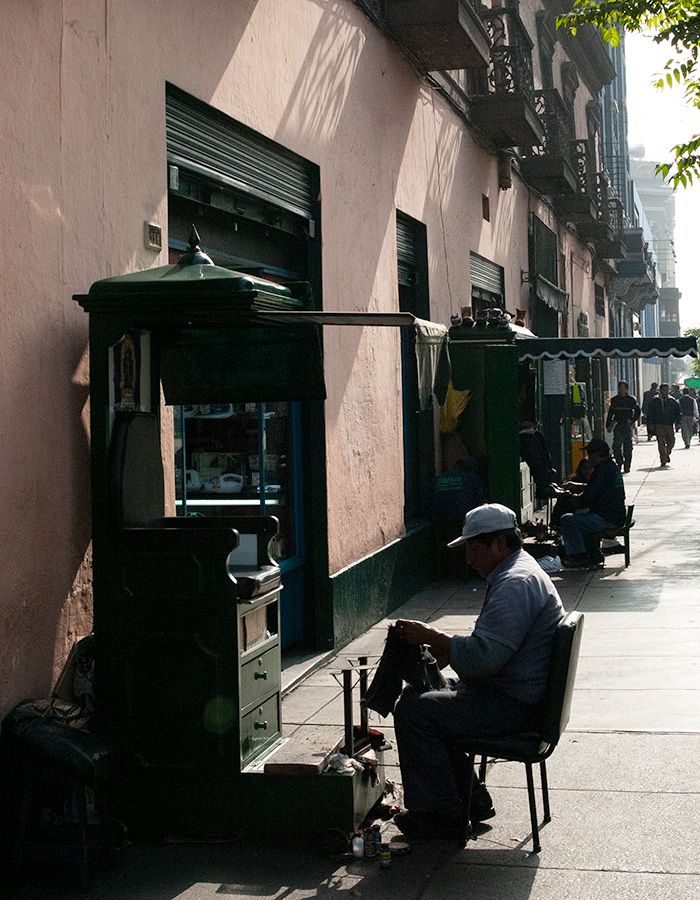
Shadows suggest the coming end of a day's work at this elegantly traditional shoeshine stand.

Fresh food and a hot grill entice the customers of this street vendor. The potatoes and corn that we see on the table are foods that originated in the New World, corn from Mexico and potatoes from Peru. They were brought back to Europe and adopted there, then from there spread around the world.

The "Palacio de Gobierno" makes a dramatic work backdrop for the these security guards.
(Pictured in the photo is the far western end of the Palace.)
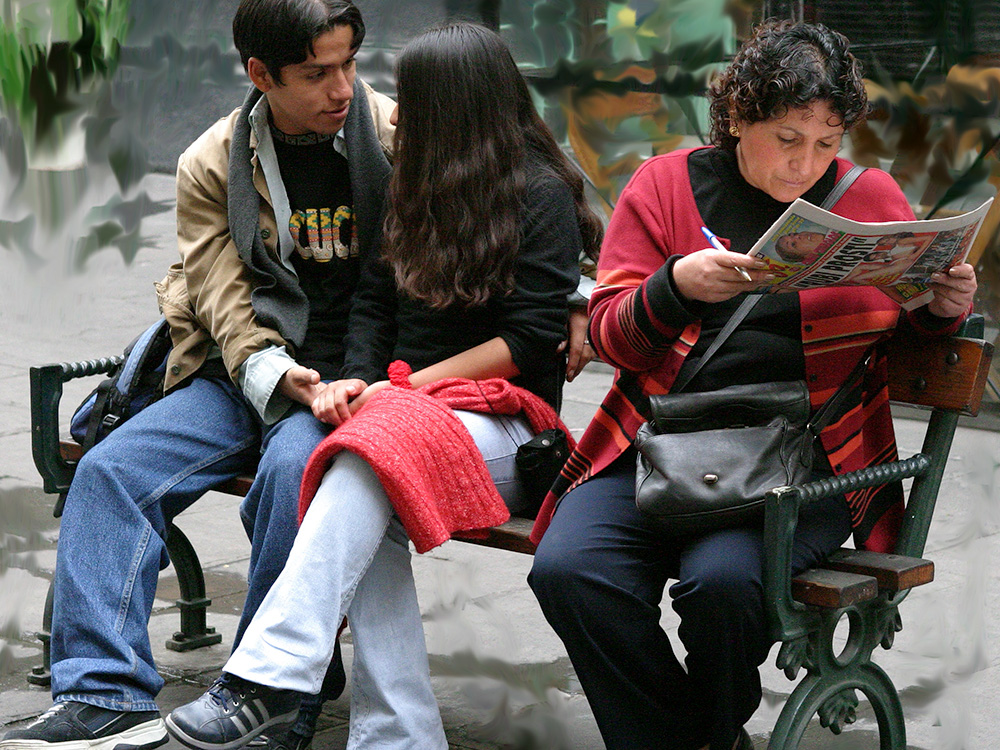
On one end of the bench the young lovers look into each other's eyes,
on the other end eyes are turned to the challenge of the day's crossword puzzle.

Ready for whatever civil disturbances come their way,
these policemen relax between assignments.
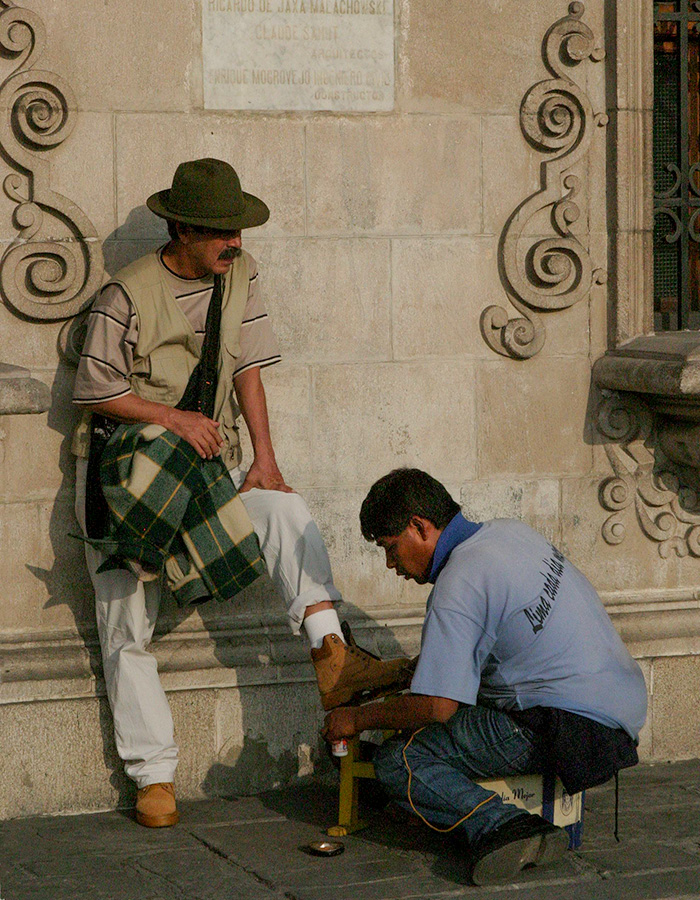
To my eyes, this man does not appear to be Peruvian. His appearance suggests he is a tourist topping off a day of shopping by getting his shoes shined.

On the streets of the historic center can be found these mobile snack stands. The young lady manning this stand appears to be a student. She is reading a Spanish language version of Susan Jeffer's book, Feel The Fear And Do It Anyway.

Despite the dramatic orange shade of the face of the cathedral, the color fits into the natural palette of Lima's historic center.
Pictured is a secondary entrance to the cathedral, not the grand main entrance.
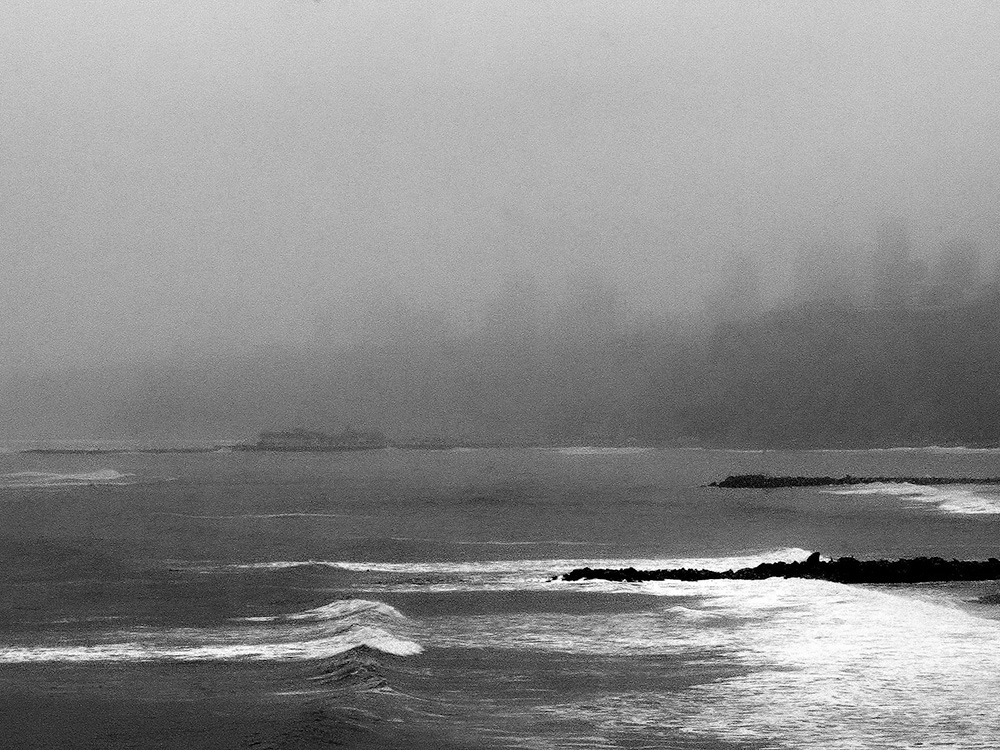
The misty fog from the sea nearly hides the tall buildings of Lima in the background, leaving them to appear as faint shadows on the distant hillside.
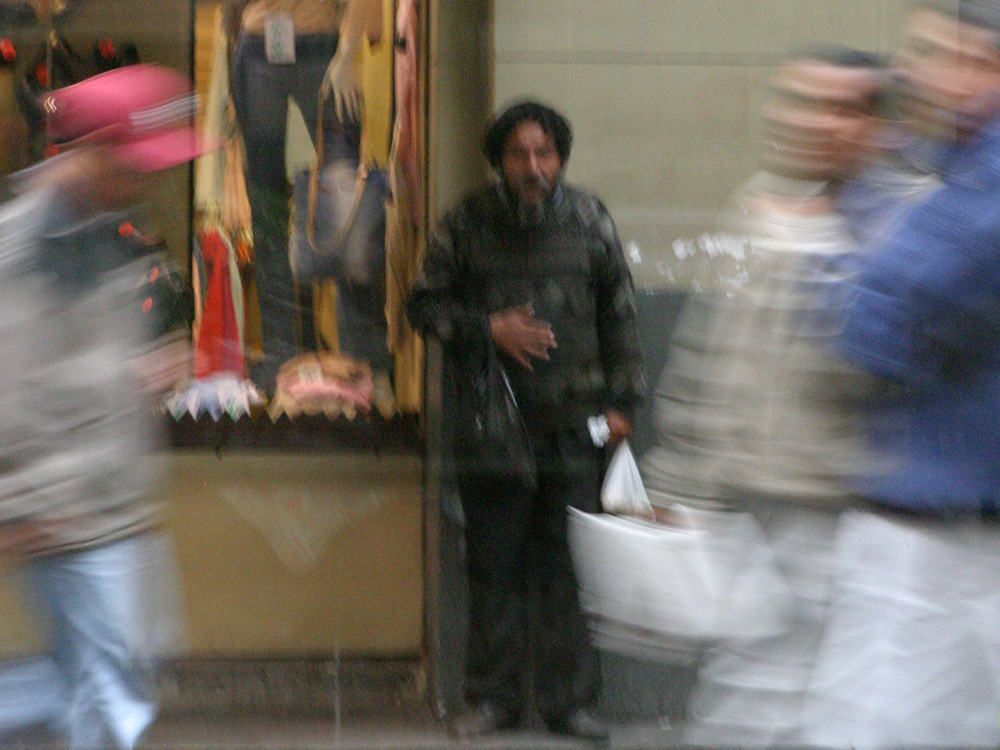
The blurred man in the center of the scene takes on a ghostly quality
in this out-of-focus photograph, enveloping it in mystery.
The photos in this collection were taken in the center of Lima in 2003. The passing of the years is likely to have ccaused little change. I could return to Lima now and make the same photographs, I believe ...nothing would have changed but the people. The buildings and streets and public places would still be the same as before.
One note of importance: these photos are not meant to be a tourist guide to the sites of the city. The pictures would have been quite different if that had been the case. Instead, the photos are
are scenes of life and people in Lima. They record impressions of the city, or as I described in my essay on photography, the photos contain truths, not facts. A photo is always partial, a limited visual selection from within a larger scene. It is inherently interpretive.
The essay on photography as interpretation can be found here: An Essay in Four Photos and Forty Words,
and for an general overview of cultural photography:
cultural photography.
The photos were made during a brief visit, but with time to pass in the city center. This was my second visit to lima, the only city in Peru that I have known.

Rodger Randle
OU Center for Studies in Democracy and Culture

The University of Oklahoma Tulsa
4502 East 41st Street, Tulsa, Oklahoma 74135
E-mail: randle@ou.edu